Affordable power monitors
Many researchers into energy using devices, want a believable way to assess the electrical input into the item under test. For instance, you might want to see how much power your TV, electric radiator or fridge uses over a period of time. In this short article, the devices shown in Figure 1 will be discussed and an overview on video will be given.
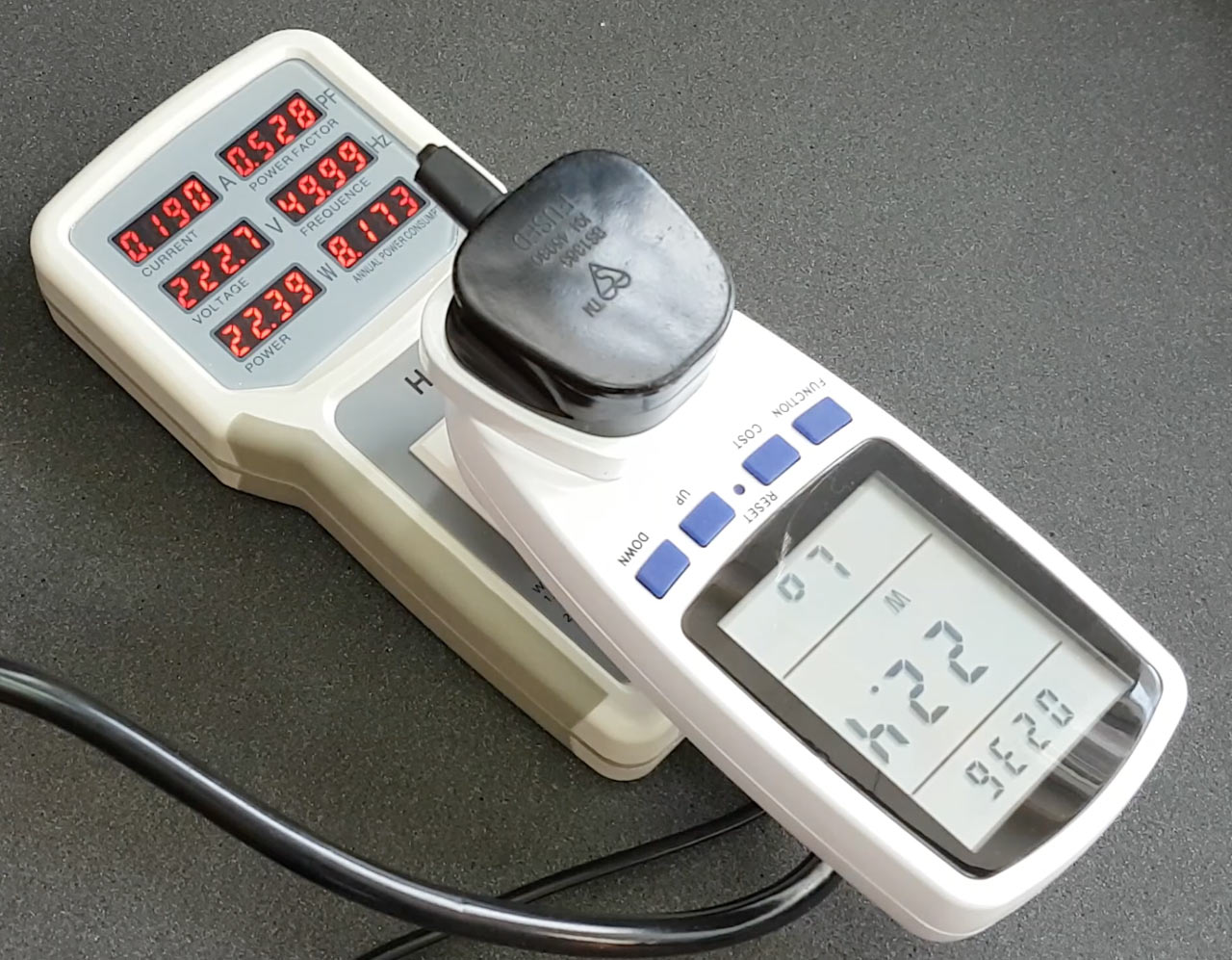
Power analysers
The Martin Fleischmann Memorial Project (MFMP), is a project that is set up to test claims of devices that appear to harness the 'New Fire' and, as part of its activities, it has in the past used a PCE-830, as shown in Figure 2 and a Techtronix PA1000.
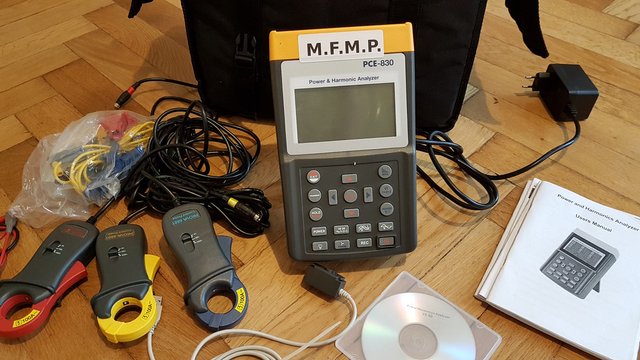
These kind of devices are very expensive, $2000 is a typical ball-park for something at the low end. This is actually quite necessary when a researcher is using very complicated control waveforms, plasma or sparks etc. that could have harmonics and the like that would fool a cheaper detector. This would especially be the case if one is trying to determine small variations in input power, compared to say, small variations in thermal output power.
The MFMP is preparing to test claims of 'New Fire' technologies in the months of May (HOMO, AURA) and June 2017 (NOVA/ECCO) , the claimants have said that the devices produce transmutations in elements, and/or excess power (one could say, 'free energy' but it is meant to be capturing energy from somewhere and thermalising it). Some of these claims are of output thermal energy 8 or more times that of the electrical input, for months, with the active fuel component less than 13 grams.
For these technologies to be widely accepted, scores of people will need to verify any successful apparatus we openly test. For more people to be able to easily test these devices, it would be great if the power monitoring did not cost several thousands of dollars. Well, when the power levels get up this high, one might argue that the harmonic energy components may be less important to the overall conclusion, and so power monitoring may not need to be so accurate in ball-park measurement. To that end, the MFMP will test a couple of affordable power monitors it has acquired by testing them at the same time as the reactors.
Power monitors
There are two types looked at in the video at the bottom of this article. The first, shown in Figure 3, cost just $11 delivered, and is able to store cumulative data and minimum and maximum power usage data.
H9755EU Power Meter
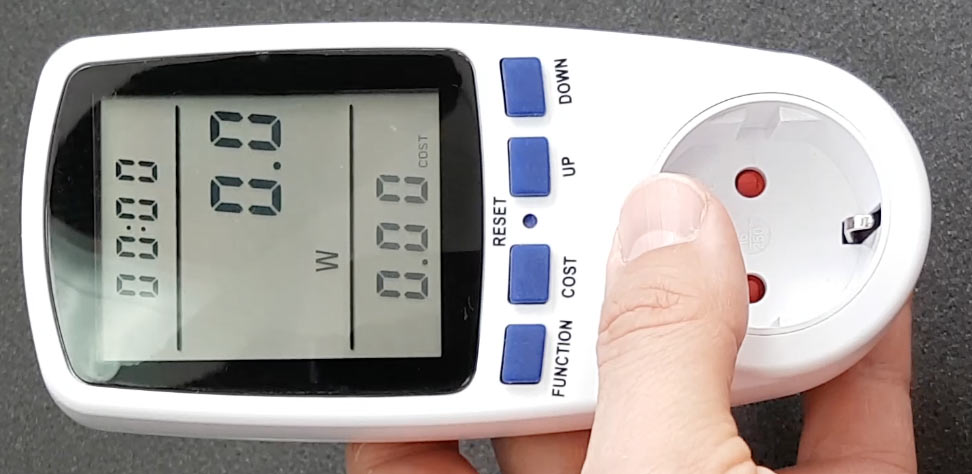
Features (H9755EU)
Large LCD display displaying voltage, frequency, current, power factor, wattage, minimum & maximum power and recorded cumulative kilowatt-hour, time and electricity expenses.
Seven display modes, navigated by pressing "FUNCTION" button.
Overload warning displayed on LCD.
Built-in 3.6V rechargeable battery (NI-MH) to store electricity and saving setting.
Can set price of electricity.
| Attribute | Value |
|---|---|
| Operating voltage / frequency | 230V 50Hz |
| Operating current | Maximum 16A |
| Wide voltage range | 230 - 250V |
| Timing display range | 0 seconds - 9999 days |
| Wattage display (watts) | 0 - 3600W |
| Voltage display range | 0 - 9999V |
| Current display (amps) | 0.0 - 16.0A |
| Frequency display | 0 - 9999Hz |
| Minimum wattage display range | 0.0 - 3600W |
| Maximum wattage display range | 0.0 - 3600W |
| Price display range | 0.00 - 99.99kWh |
| Total kilowatt-hour and cost display | 0.000kWh - 9999kWh |
| Product size | 15.5 * 7.3 * 7.5cm / 6.1 * 2.9 * 3in |
| Product weight | 200g / 7.1oz |
Advantages
- Cheap
- Clear display that when on does not flicker in various lighting conditions
- Simple operation
- Can store values even after a power drop out
- Easy reset button
Disadvantages
- Display times out
- Needs light to see
- Sometimes it is not clear to see the output on photos or video
- Does not have earth hole for standard 13A European sockets
- Can only take plugs of the type the unit is designed for
HP9800 Electric Power Energy Analyzer + USB Modbus Port
The second device looked at cost $80 delivered, which is still a bargain, but it seems to offer a lot more and the ability to integrate it into more complex experiments.
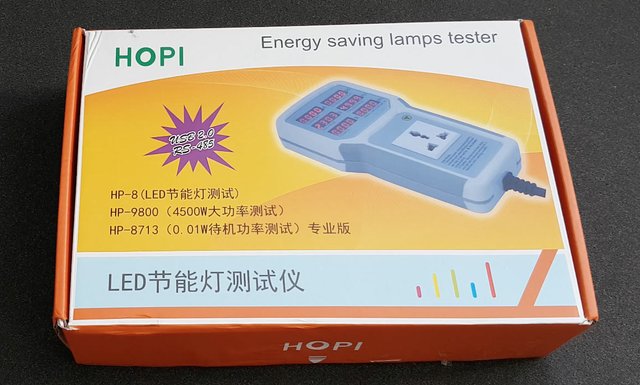
Features (HP9800)
The big advantage with this unit is the big, bright displays that have a floating decimal point which stay on and are easy to capture on camera. Again the device aggregates data since it was last reset, however, the HOPI allows you to plug the device into your computer to log data for further analysis later.
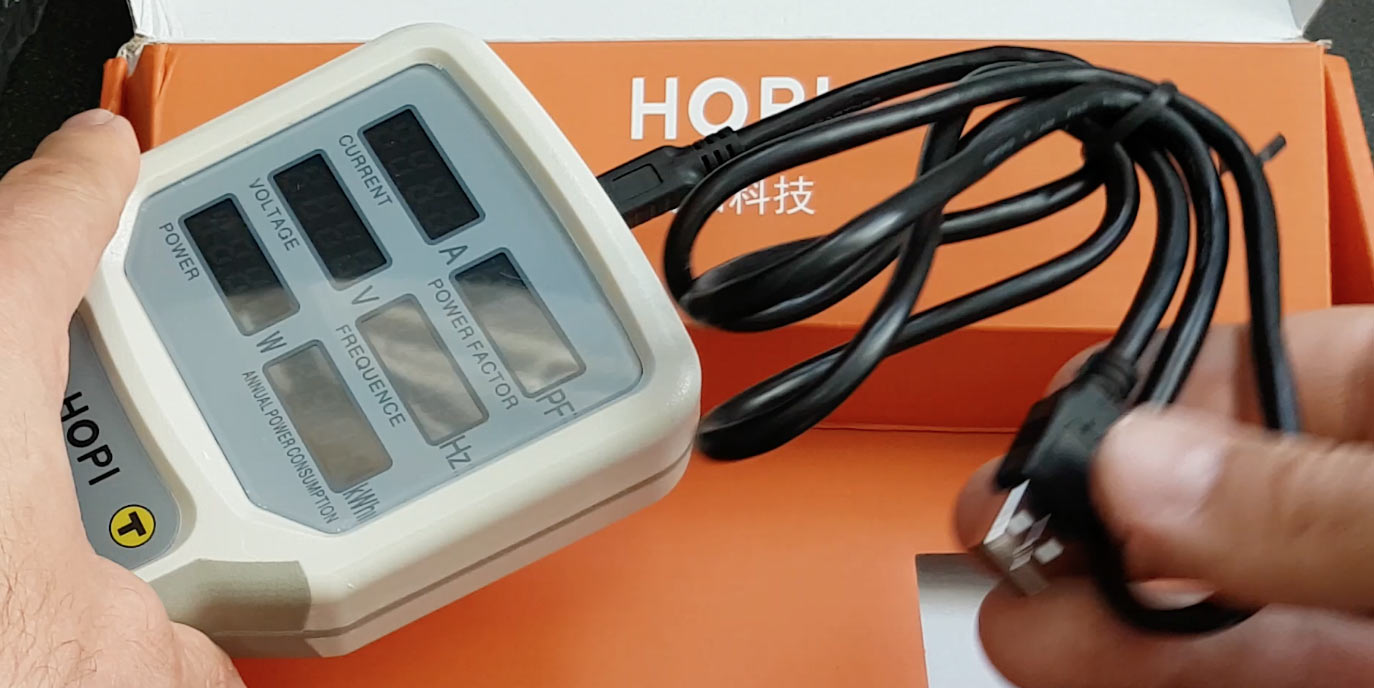


In addition to the simple logging software, the PDF supplied on the software disc provides the MODBUS codes to allow savvy programmers to integrate the capabilities of the device into other data collection systems. You could, for instance, connect to it via python to broadcast power data metrics via a rPi or PC to Plot.ly or Dashboard.io.

| (1) Load current | (2) Power supply socket |
|---|---|
| (2) Power factors | (9) Power cable |
| (3) Input voltage | (10) Model mark |
| (4) Power frequency | (11) back case |
| (5) Power test range | (12) lock case |
| (6) Annual power | (15) USB Modbus port |
| (7) Key button for adjusting working hours and display mode |
You can specify how much time a tested device is expected to be used on a normal day for annual power estimation. The instrument can display voltage, current, power, power factor, power grid frequency and annual power useage.
| Attribute | Value |
|---|---|
| Current test range | 0.002 A - 20 A minimum resolution: 0.001 A |
| range of input voltage | 85 - 265 V |
| voltage resolution | 0.1 V |
| power frequency test range | 45 - 65 Hz |
| active power test range | 0.5 - 4440 W |
| Test current | 20A |
| Accuracy | 0.5w |
| Size | 20.3cm x 10cm x 35cm (L x W x H) |
| Weight | 550g |
Advantages
- Affordable
- Bright display that stays on and easy to photograph and video
- Most important data seen all the time without having to switch modes
- High power
- Log data to computer
- Integrate into more complex experiments with data broadcasting
- Socket can take a wide array of international plugs
Disadvantages
- Tedious to reset
Video
The video below looks at these two power monitors in form and during operation.
So that HP9800 looks to be a GREAT tool in general, as long as you can check its calibration and accuracy. Much of this cheap gear fails quickly, but as long as it operates reliably for a sustained test, it's justifiable even as a throwaway (and I NEVER throw away tools...)
We will look at using it during the ECCO testing, the PCE-830 provided as accurate data as the PA1000, but the PA1000 crashes sometimes, so we intend to look at integrating the HP9800 in place of the PA1000 - it will make the baggage lighter too!